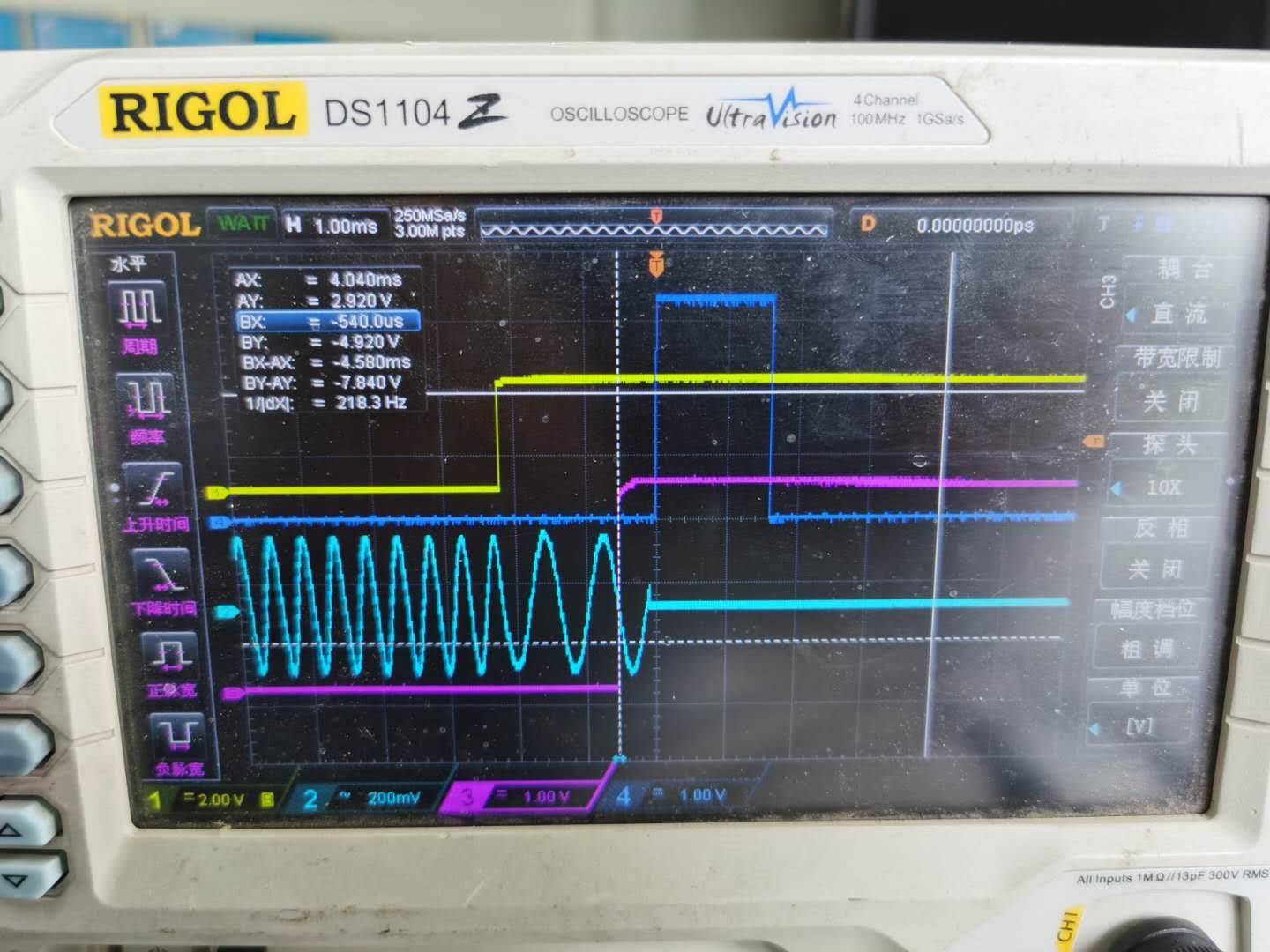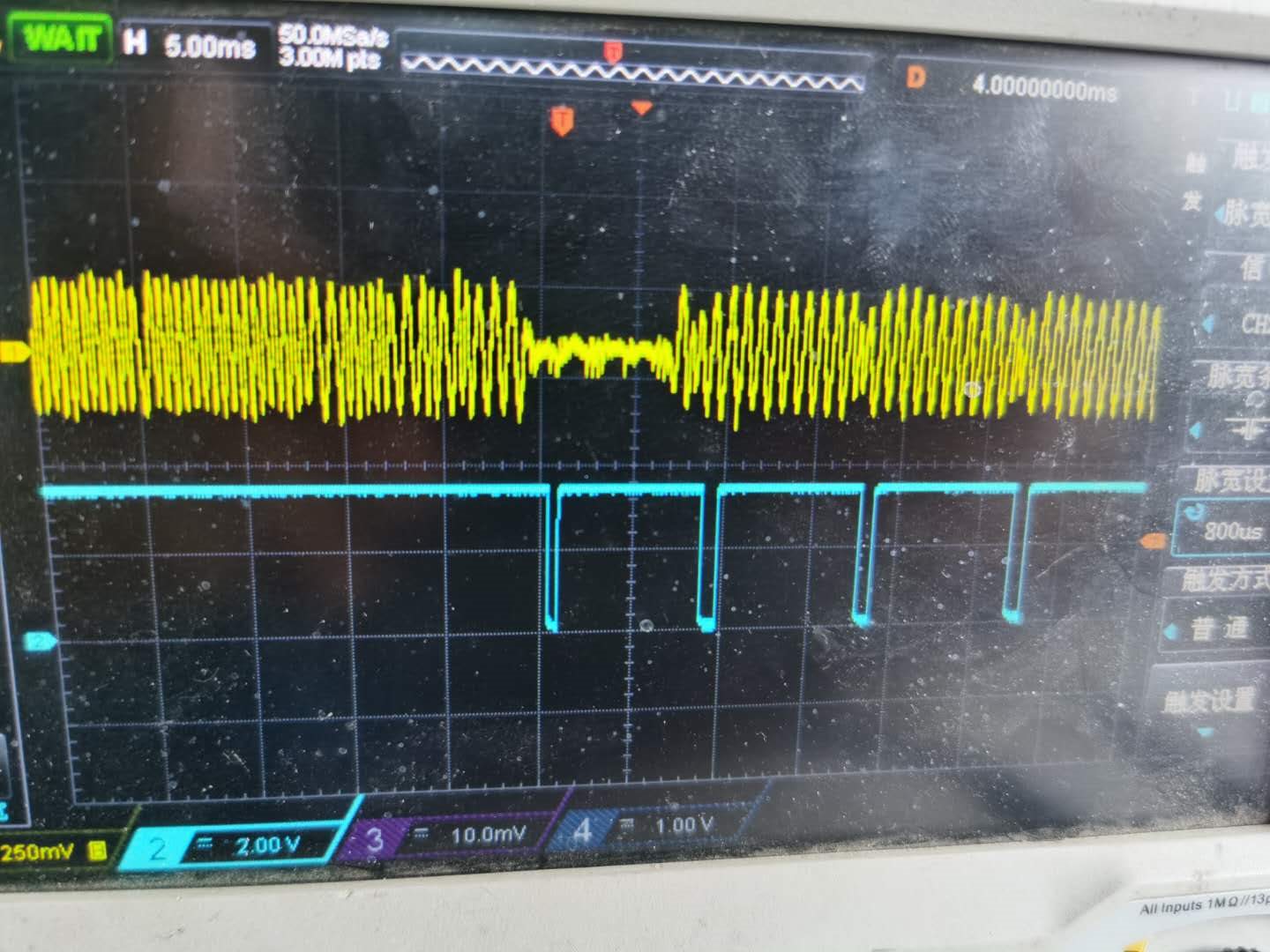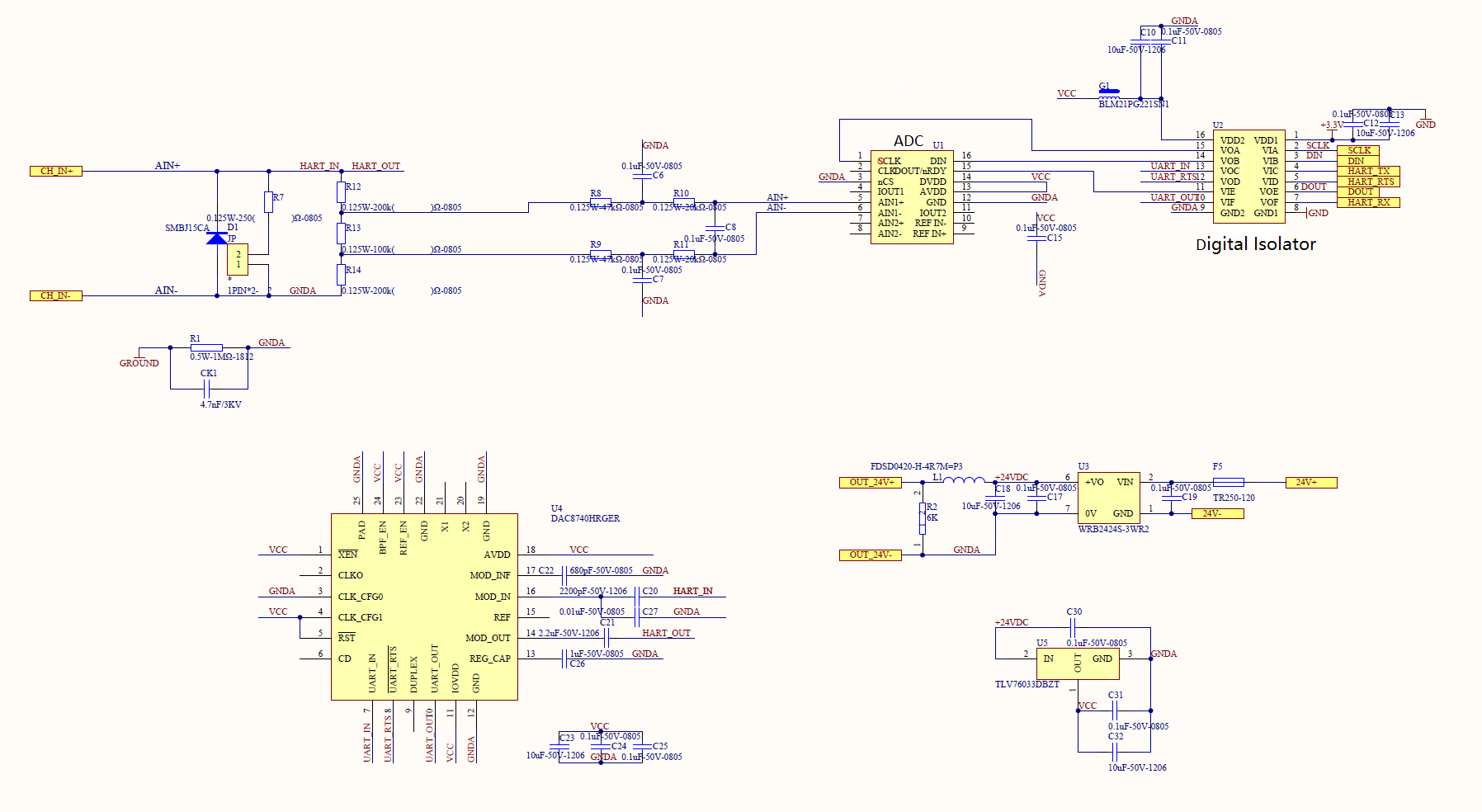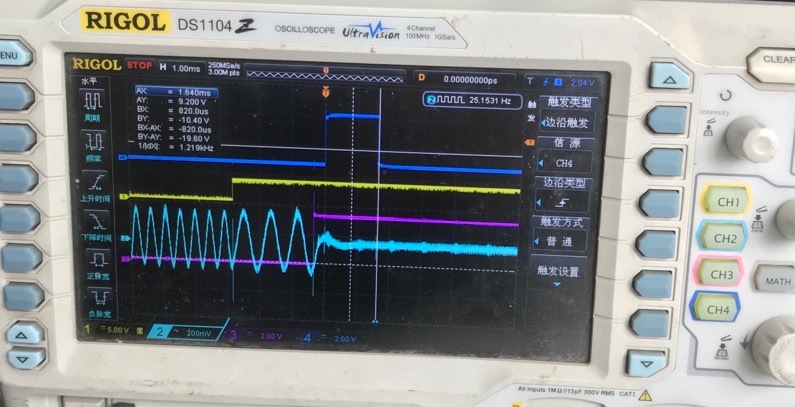Other Parts Discussed in Thread: TIDA-060020
Hi,
Application: HART Demodulation at PLC analog input module
Issue: Wrong carrier detection and demodulation signal appears occasionally.
Figure 1: blue- HART carrier signal, deep blue- CD signal ; Figure 2: yellow- HART carrier signal, blue- demodulated signal
Please find the schematic in the below which is referring to TIDA-060020. Please note the C27 has already been corrected to HART_OUT end on the board.
Questions:
1. The difference between the schematic and TIDA-060020 is that the REF PIN 15 is float rather than connected to ground through 0.1uF cap. Does this may cause the phenomena above?
2. Since the internal reference is selected, is it necessary to ground with decoupling cap?
3. Except the REF aspect, any other suggestion on schematic or test environment for improvement?






